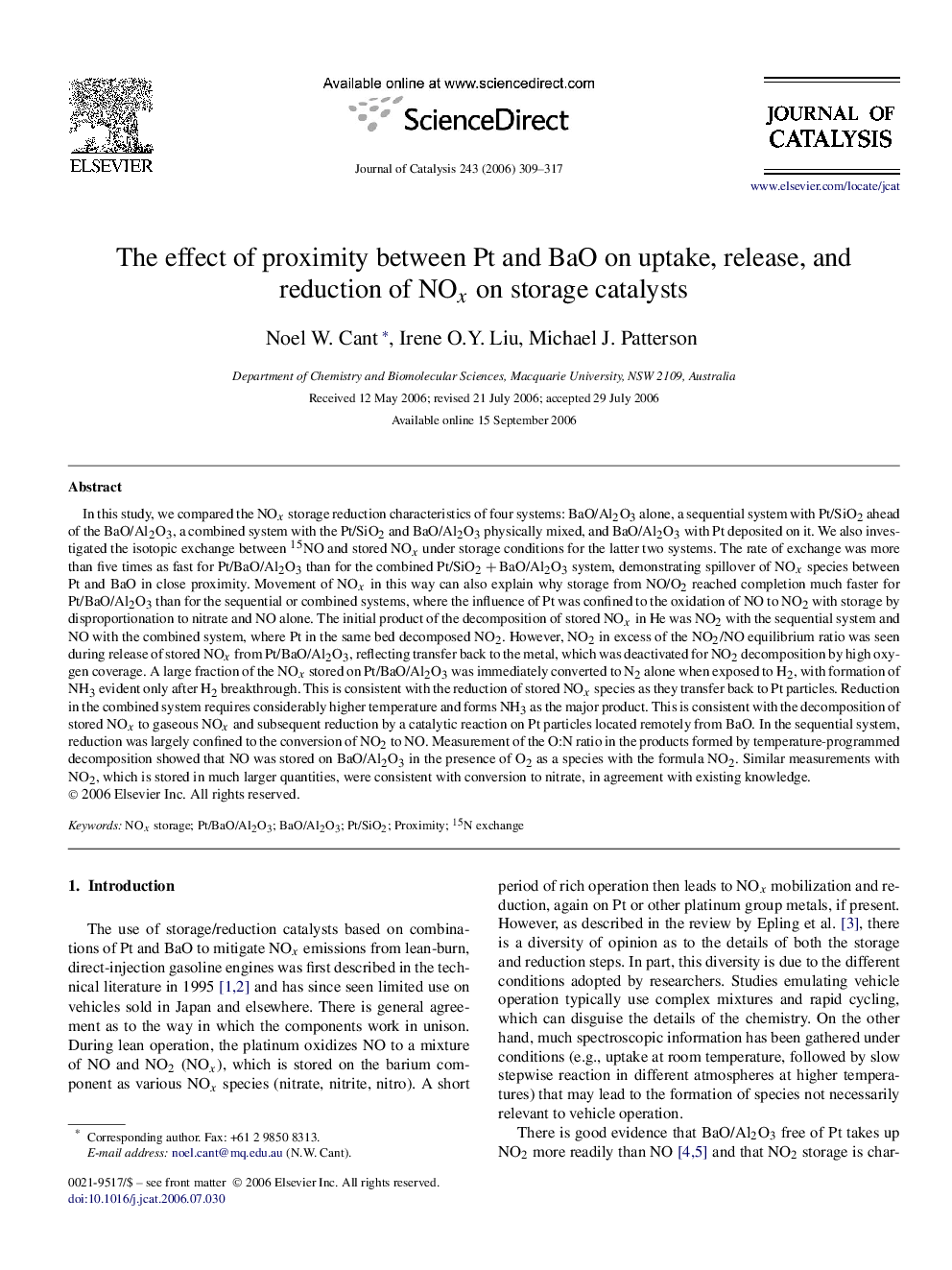| کد مقاله | کد نشریه | سال انتشار | مقاله انگلیسی | نسخه تمام متن |
|---|---|---|---|---|
| 63392 | 47686 | 2006 | 9 صفحه PDF | دانلود رایگان |

In this study, we compared the NOx storage reduction characteristics of four systems: BaO/Al2O3 alone, a sequential system with Pt/SiO2 ahead of the BaO/Al2O3, a combined system with the Pt/SiO2 and BaO/Al2O3 physically mixed, and BaO/Al2O3 with Pt deposited on it. We also investigated the isotopic exchange between 15NO and stored NOx under storage conditions for the latter two systems. The rate of exchange was more than five times as fast for Pt/BaO/Al2O3 than for the combined Pt/SiO2 + BaO/Al2O3 system, demonstrating spillover of NOx species between Pt and BaO in close proximity. Movement of NOx in this way can also explain why storage from NO/O2 reached completion much faster for Pt/BaO/Al2O3 than for the sequential or combined systems, where the influence of Pt was confined to the oxidation of NO to NO2 with storage by disproportionation to nitrate and NO alone. The initial product of the decomposition of stored NOx in He was NO2 with the sequential system and NO with the combined system, where Pt in the same bed decomposed NO2. However, NO2 in excess of the NO2/NO equilibrium ratio was seen during release of stored NOx from Pt/BaO/Al2O3, reflecting transfer back to the metal, which was deactivated for NO2 decomposition by high oxygen coverage. A large fraction of the NOx stored on Pt/BaO/Al2O3 was immediately converted to N2 alone when exposed to H2, with formation of NH3 evident only after H2 breakthrough. This is consistent with the reduction of stored NOx species as they transfer back to Pt particles. Reduction in the combined system requires considerably higher temperature and forms NH3 as the major product. This is consistent with the decomposition of stored NOx to gaseous NOx and subsequent reduction by a catalytic reaction on Pt particles located remotely from BaO. In the sequential system, reduction was largely confined to the conversion of NO2 to NO. Measurement of the O:N ratio in the products formed by temperature-programmed decomposition showed that NO was stored on BaO/Al2O3 in the presence of O2 as a species with the formula NO2. Similar measurements with NO2, which is stored in much larger quantities, were consistent with conversion to nitrate, in agreement with existing knowledge.
Journal: Journal of Catalysis - Volume 243, Issue 2, 25 October 2006, Pages 309–317